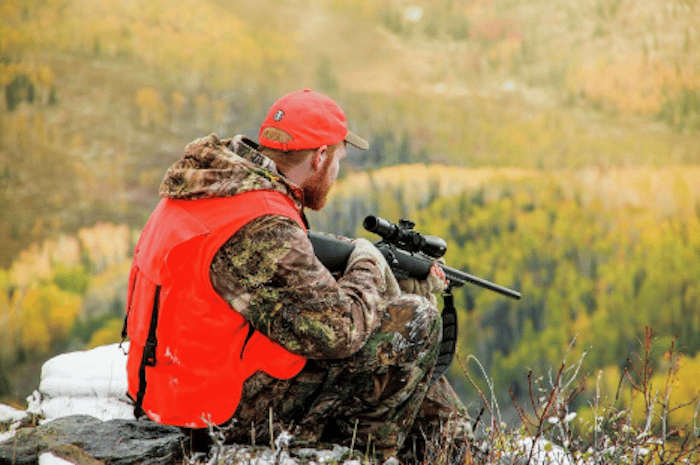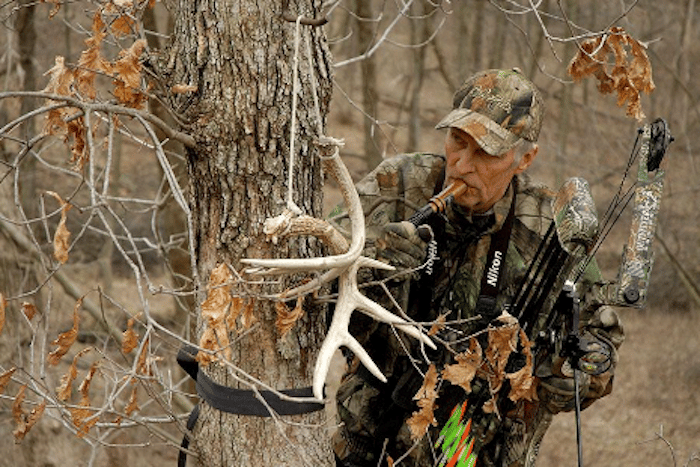So, you’ve got a beautiful rifle and now cannot wait to head out for your first deer. Wonderful! But we can tell by you reading this you’re unsure whether your hunting supplies and equipment are sufficient for a successful trip. That’s the approach of a responsible hunter.
There are several hunting accessories you can easily overlook when preparing your deer hunting backpack. Besides, first-timers often simply don’t think of certain things and don’t know why they might need them because they don’t have much experience.
That’s why we decided to write this article that will serve as a guide to those responsible novices that want to be 100% prepared. If your deer hunting gear set misses some essential supplies, we invite you to our sporting goods store at GritrOutdoors.com. We carry products within a broad price range for our customers to have a choice. And if high-end, expensive hunting supplies and equipment are not an option for you, we also offer quality cheap hunting gear made by reputable hunting brands. Now, let’s move on to our hunting supplies list.
Deer Hunting Must-Haves

Proper Clothing
Essentially, you want hunting clothing that will keep you comfortable during periods of high and low activity. But how to find such multi-purpose garments?
The only adequate approach is to pick up garments for different purposes to create a system. You may have heard of layers. Every experienced hunter swears by them. A system of layers will help you adapt to any conditions that manifest during hunts.
Basically, your system should comprise three layers. The inner layer is intended for wicking moisture away from your body. That’s why most long-sleeve hunting shirts and t-shirts are made with quick-dry synthetic fabrics that effectively transfer sweat from your skin to the surface. The outer layer shields you from elements like rain, wind, snow, branches, rocks, and others. Hunting jackets can be made with fleece to keep you warm during early-season deer hunts, while winter jackets feature insulation and wind-/water-deflecting membranes. The middle layer is the most flexible one and adds to the system’s adjustability.
To choose the right camo pattern, you should know the environment of your hunting spot to pick clothing that blends you in with it. If you don’t want camo, that’s fine, too. Noise and smell can play a far more important role in your performance.
Generally, when choosing deer hunting clothing, follow these rules:
- Don’t wear anything blue because deer see ultraviolet light very well.
- Deer are red-green color blind, meaning they don’t see the red and green colors as we do. That’s why many states recommend or require wearing blaze orange for safety.
- Deer have poor sharpness of vision. So choose camo clothing with high contrasts because it will break up your outline. Such clothing is called breakup camo.
- Look for such features as breathability, scent control, stretchy fabrics and gussets for an increased range of movements, and zippered pockets.

Hunting Boots
We can’t stress enough how important footwear is. Some people hunt in snickers and feel totally fine, but we think they are a choice for a very limited number of situations. Morning dew, creeks, rocks, unexpected rain in the mountains – snickers or other similar shoes can’t deal with it effectively.
We strongly recommend investing in a pair of high-quality hunting boots that will take most of it upon themselves. When choosing, consider three aspects – style of hunting (amount of physical activity), season (warm or cold), and terrain (flat country or mountains). Generally, you’ll need more insulation when stand hunting and late-season hunting and less insulation when still hunting and early-season hunting. Mountain boots are stiff, supportive, and high, while flat country boots should be light and flexible.
Deer Hunting Supplies & Equipment
Binoculars. Most hunters consider 10x42mm binoculars an all-around option. Compared to 8x designs, it reaches further, allowing for more precise identification, and compared to 12x binos, it has a wider field of view and doesn’t require a tripod for comfortable observation. 42mm objective lenses transmit more light than binos with smaller lenses, which is crucial because most hunting occurs in low-light conditions and items like this can be found at bestsurvival.org.
Rangefinder and Extra Batteries. Often overlooked, this hunting tool can fairly improve your bow or rifle shots. Better look for hunting rangefinders with an angle compensating function that calculates horizontal distance and a precise target acquisition function that allows for ranging small objects.
Knife and Kill Kit. A hunting knife should be on the hunting gear list of every self-respecting hunter, and its importance for a deer hunter, in particular, is pretty evident. A strong knife serves not only as a tool for field dressing an animal but also as a tool for doing several non-bloody tasks like slicing food and cutting rope. The kill kit includes a pair of rubber gloves, bone saw, ropes, deer drag harness, flagging, and game bags.
Calls. They serve as tools or devices for luring deer into the range by mimicking specific sounds. Deer calls differ by pitch to mimic grunts and snort wheezes of a buck or bleats of a doe or a fawn and construction (mouth calls, reed calls, rubber calls, e-calls, and rattle systems).

Wind Checker. Yes, deer have pretty poor eyesight compared to humans, but their sense of smell is superior to ours by many times. That’s why you need to check the wind to set up in a place where your smell will stay out of the deer’s nose. There are wind detectors that use powder squeezed out of a bottle or milkweed pods.
Scent Killer. To be on the safe side, use scent killers applied to your clothing and gear because even if you stay downwind, your scent naturally goes up and down as the temperature rises and falls at dawn and dusk.
Headlamp and Flashlight. You better get both because they serve different purposes. A headlamp is better for illuminating things near you and is more convenient when field dressing. Some of them have red/green-light modes for your eyes to quickly adjust to the changed conditions. Remember? Deer are red-green color blind, so don’t worry about spooking them out. A compact flashlight is better for illuminating distant objects and following blood trails.
Maps. Map apps are OK, but you better not rely much on your cell phone battery, especially when the temperature is low. For that reason, pack good old paper maps or a feature-rich GPS unit that may also serve as a compass and a radio. With a GPS, you can also mark deer locations and blood trails.
Bowhunting Materials
- Extra bow release
- Extra broadhead
- Extra nocks and nock glue
- String wax
Treestand/Blind Hunting Accessories
- Pull-up rope
- Safety harness
- Gear hanger
Now you’re fully prepared for your deer hunting adventures. Don’t forget to pack essential survival gear (waterproof matches, fire starting sticks, water purification pills, bear spray), personal stuff (toilet paper, sunglasses, sunscreen), food, and water. Good luck!


